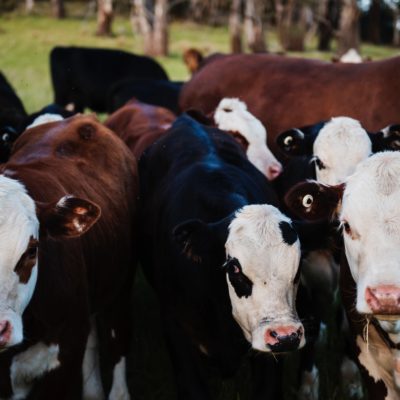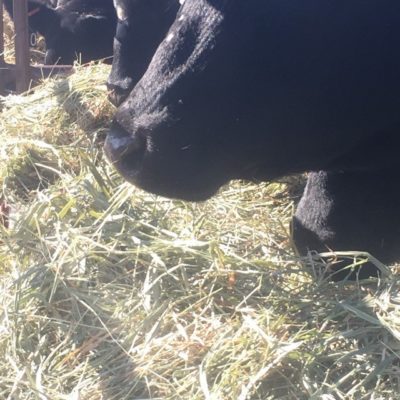I receive many phone calls about interpreting a feed report. The interpretation depends on the reason for testing. Some reports help formulate an animals diet. Other reports determine hay quality for buying and selling. At Ward Laboratories, INC. , we provide the Ward Guide to help producers interpret agricultural testing reports. Here are my tips for interpreting a feed report:
1. Determine the Species Nutrient Requirements
It is important to understand the animal’s nutrient requirements. Nutrient requirements can be found in the National Research Council’s Nutrient Requirements reference books. You can also find these requirements in extension publications.
Nutrient Requirements of Beef Cattle – OSU Reference
Nutrient Requirements of Swine
Nutrient Requirements of Horses
Nutrient Requirements of Small Ruminants
Nutrient Requirements of Poultry
Nutrient Requirements of Dairy Cattle
2. Compare Macro-Nutrients in Feed to Animal Nutrient Requirements
- Protein is the first key nutrient. Compare the protein percent in the feed and the percent required by the animal. For example: You are feeding a non-lactating beef cow in the last third of pregnancy. Her protein requirement is approximately 8% on a dry matter basis. Therefore, if the forage report read 6.5% protein on a dry basis she would require protein supplementation.
- Energy is not actually a nutrient, but it is a requirement. It is provided through carbohydrates and fat. Livestock species energy values are calculated based on measurable nutrient values. For example, Metabolizable Energy (ME) in swine is based on a calculation from Neutral Detergent Fiber (NDF), Fat, Ash, and Protein. For most beef cattle feeds, the Total Digestible Nutrients (TDN) is based solely on Acid Detergent Fiber (ADF). Then, TDN is used to calculate performance parameters such as Net Energy of Maintenance (NEm) and Net Energy of Gain (NEg). As ADF increases the energy value of the feed decreases due to the inverse relationship ADF has with soluble carbohydrates.
- NDF is a predictor of a feed’s digestibility. The higher the NDF value the lower the digestibility of that feed. For example, a poor quality hay or straw will commonly have an NDF of greater than 65% on a dry basis. Meanwhile, high quality alfalfa has an NDF of less than 34% on a dry basis.
- Fat is an important macro-nutrient. Fat also plays vital roles in basic cell biology. Additionally, fat carries fat-soluble vitamins. In ruminant livestock species however, fat at high levels can negatively affect fiber digestibility.
3. Compare Micro-Nutrients in Feed to Animal Nutrient Requirements
- Minerals are important. They are often an overlooked component of feed analysis. Proper mineral nutrition can ensure animals’ physiological systems are functioning properly. Understanding minerals available in the feed or forage can help producers choose the best mineral supplement. Mineral analysis allows producers to make decisions specific to their unique operation. This avoids mineral toxicity or deficiency obstacles in livestock production. Also, proper mineral nutrition prevents many animal health issues.
- Vitamins are not typically found on feed reports. They are difficult and expensive to analyze. Typically, vitamin analysis only occurs when a producer is experiencing a wreck. Vitamins are still vital to animal health and production. It is important to provide supplements that contain fat soluble vitamins such as Vitamin A and Vitamin E to livestock. Most water soluble vitamins are provided to the animal in forages.
4. Use Forage Quality Indexes to Quickly Categorize Hay
Remember, that forage quality indexes, such as Relative Feed Value (RFV) and Relative Forage Quality (RFQ), are a quick determinant of how to categorize hay. No animal has a RFV requirement or RFQ requirement. It is up to the producer to look at the nutrient values and decide how to utilize that forage. Low RFV and RFQ forages have high fiber content. Therefore those forages will need more supplementation. However, depending what supplemental feeds are available, a low quality forage is not useless. Roughages certainly have their place in promoting rumen health. Remember the primary function of these indexes is to categorize hay for buying and selling.
When interpreting a feed report, the target is to meet animal requirements so animals can meet production goals. Protein, energy, fiber, fat and micro-nutrients are all key components of the animal diet. Therefore, they are key in feed and forage analysis. As always, Ward Laboratories, INC. is here to help answer your agricultural testing questions.





[…] more expensive to harvest than what they are worth. Grazing harvested crop residues requires understanding animal requirements and knowing what is available in those forages for supplementation. Producers should analyze forages at Ward Laboratories, INC. to determine their […]
[…] surveying the financial horizon for may lead some cow/calf producers to determine feed analysis is an unnecessary cost. However, upon closer examination there is value in feed testing. […]
[…] who are organized to make hay as soon as the sun starts shining and then their report shows low Relative Feed Value (RFV) and Relative Forage Quality(RFQ). After all, the saying is, “Make hay while the sun is […]